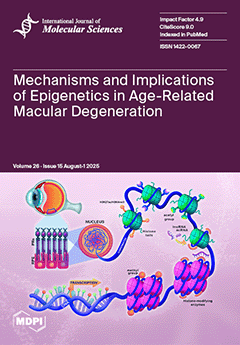A one-pot synthetic methodology that combines an Ugi-Zhu three-component reaction (UZ-3CR) with a cascade sequence (intermolecular
aza Diels–Alder cycloaddition/intramolecular
N-acylation/decarboxylation/dehydration) using microwave-heating conditions, ytterbium (III) triflate (Yb(OTf)
3) as the catalyst, and chlorobenzene (for the first time in a multi-component reaction
[...] Read more.
A one-pot synthetic methodology that combines an Ugi-Zhu three-component reaction (UZ-3CR) with a cascade sequence (intermolecular
aza Diels–Alder cycloaddition/intramolecular
N-acylation/decarboxylation/dehydration) using microwave-heating conditions, ytterbium (III) triflate (Yb(OTf)
3) as the catalyst, and chlorobenzene (for the first time in a multi-component reaction (MCR)) as the solvent, was developed to synthesize twelve new fluorinated-pyrrolo[3,4-
b]pyridin-5-ones containing a 4-amino-7-chloroquinoline moiety, yielding 50–77% in 95 min per product, with associated atom economies around 88%, also per product. Additionally, by in vitro tests, compounds
19d and
19i were found to effectively stop early SARS-CoV-2 replication, IC
50 = 6.74 µM and 5.29 µM, at 0 h and 1 h respectively, while cell viability remained above 90% relative to the control vehicle at 10 µM. Additional computer-based studies revealed that the most active compounds formed strong favorable interactions with important viral proteins (M
pro, NTDα and NTDo) of coronavirus, supporting a two-pronged approach that affects both how the virus infects the cells and how it replicates its genetic material. Finally, quantum chemistry analyses of non-covalent interactions were performed from Density-Functional Theory (DFT) to better understand how the active compounds hit the virus.
Full article






